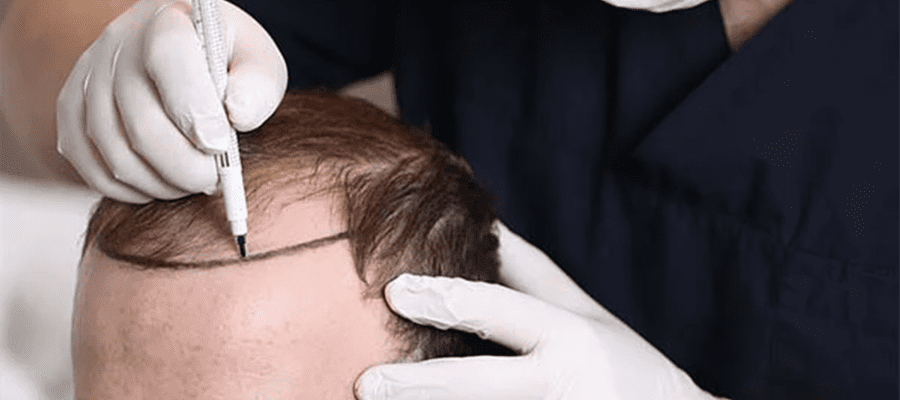There has been a recent increase in interest in “hairline determination using laser and laser hair transplantation”, which is parallel to the increased use of lasers for a wide range of aesthetic surgical procedures. Lasers provide great advantages for both the physician and the patient.
What does hairline determination using laser means?
The current role of lasers is to create the region in which the grafts will be placed. The lasers used today are “ultra or super pulse” CO2 lasers. Unlike lasers that work with selective photothermolysis, these lasers simply vaporize the tissue to create a hole. Since the pulse of these new lasers (where the beam is on at any given moment) is very short, there is no excessive heat transfer or damage to the “surrounding tissues”. Local anesthesia is used to avoid pain just like all of the transplantation procedures.
What are the advantages of hairline determination using laser?
The hairline determination using laser results with little or no bleeding compared to others. The hair transplantation process aims to maximize blood flow to the implanted hair follicles. Therefore, it is extremely important to objectively measure the effect of the coagulant effects of the laser on blood supply and graft survival, because this appears to be the trend of the future. As in electrosurgery, the laser properties can be modified in order to get more results from coagulation.
The elasticity of normal skin allows the recipient area to hold and fix small follicular implants. Maintaining recipient dermal elasticity allows patients who undergo follicular transplantation procedures to wash and gently rinse the transplanted area one day after the surgery without the risk of losing their transplantation. In addition, fast recovery helps reduce leakage and scab formation over the same 24-hour period. When the healing is complete, no clinical evidence of scarring can be seen even when the scalp is shaved.
Lasers: New technology for an old technique
Lasers are claimed to be better than conventional slit and punch grafts. The biggest advantage is that they can create slits. This slit looks much more natural than the slits created by the staples. It also removes tissue like a stapler and makes more room for the implant. In older techniques where grafts are not “anatomical” and include hairs that reach multiple follicular units, they can cause slow healing and graft compression when the recipient area is excessively large. In follicular transplantation, neither large slits nor staples are used to take in donor grafts. By defining the patient’s natural hair groups, the implants can be pre-cut from the excess tissue between the groups, resulting in tiny follicular units that can be placed in very small areas, resolving both recipient mass and compression problems.
What should be considered in hairline determination using laser?
When hairline determination using laser, symmetrical recesses and protrusions should be created taking into account the natural hairline of the person. Although it is a laser-assisted design, it is still necessary to apply artistic perspective and personalized design. The laser offers ease of application in the front hairline design.

